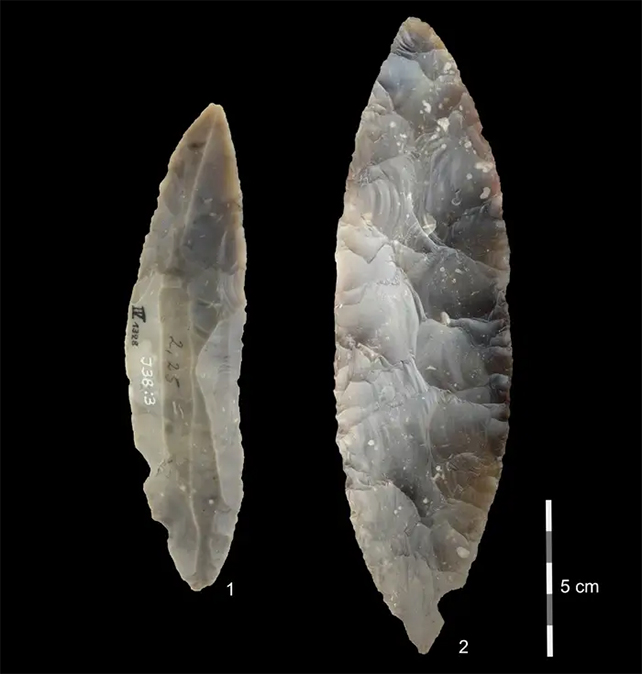I came across this broken part of a flint knife 'of the time,' in my back garden many years ago ~ (not where I presently live).More about the Lincombian-Ranisian-Jerzmanowician technocomplex and the debate about when humans first entered Europe.
Researchers on the hunt to settle a long-standing debate ended up rewriting the timeline of ancient human history in the process.
For years, archaeologists have argued over an ancient culture with the unwieldy title: the Lincombian-Ranisian-Jerzmanowician technocomplex. Even scientists know that's a mouthful, so they call it the LRJ for short.
The LRJ is characterized by the creation of specific blades and leaf points, which share aspects of both Neanderthal and Homo sapien craftsmanship.

LRJ stone tools newly excavated from Ranis. (Josephine Schubert/Museum Burg Ranis)
The debate is over who made them, and the answer could help offer clues as to what happened about 45,000 years ago – when Neanderthals, one of our closest human relatives, mysteriously went extinct across Europe while Homo sapiens, ultimately, thrived.
"The usual wisdom was to consider that they were made most likely by late Neanderthals," said study co-author Jean-Jacques Hublin, a professor of paleoanthropology at the College of France.
But Hublin and his colleagues wanted to settle the debate once and for all. This led them to Ilsenhöhle cave in Ranis, Germany, one of several sites across Northwestern Europe where LRJ artifacts have been found. ...
https://www.sciencealert.com/pioneer-humans-entered-europe-thousands-of-years-earlier-than-thought
I was digging a hole in order to plant something in a flower bed, and I was intrigued to find it there.
*Bottom:
*One edge carried an incredibly sharp single cutting edge,
and on the other edge, as you can see had a serrated edge.
*Top@
Last edited:

